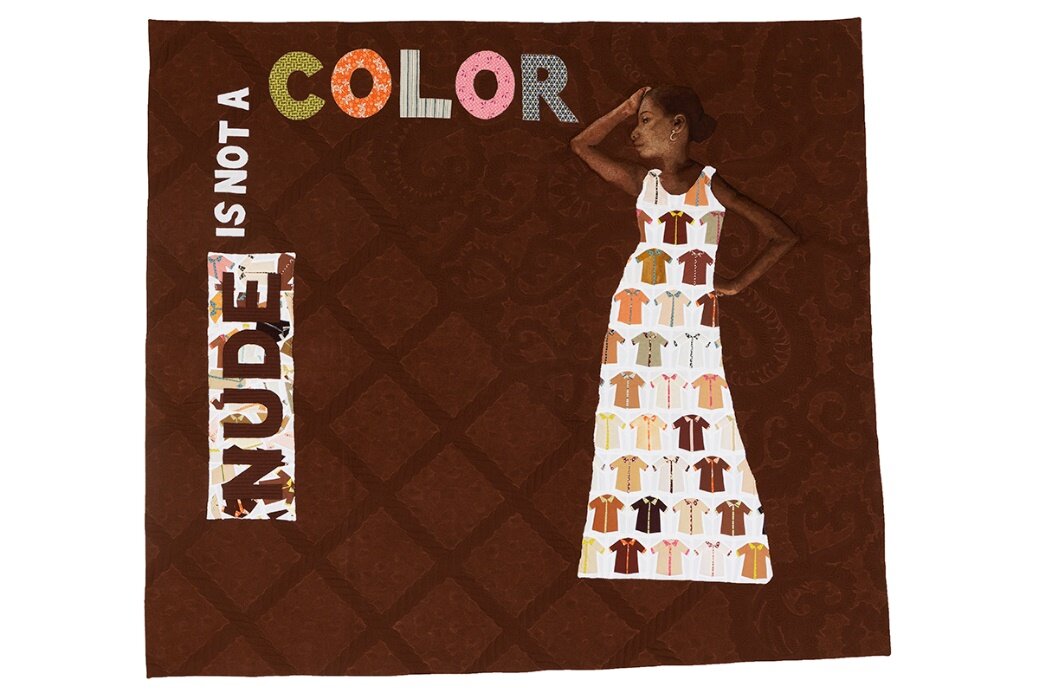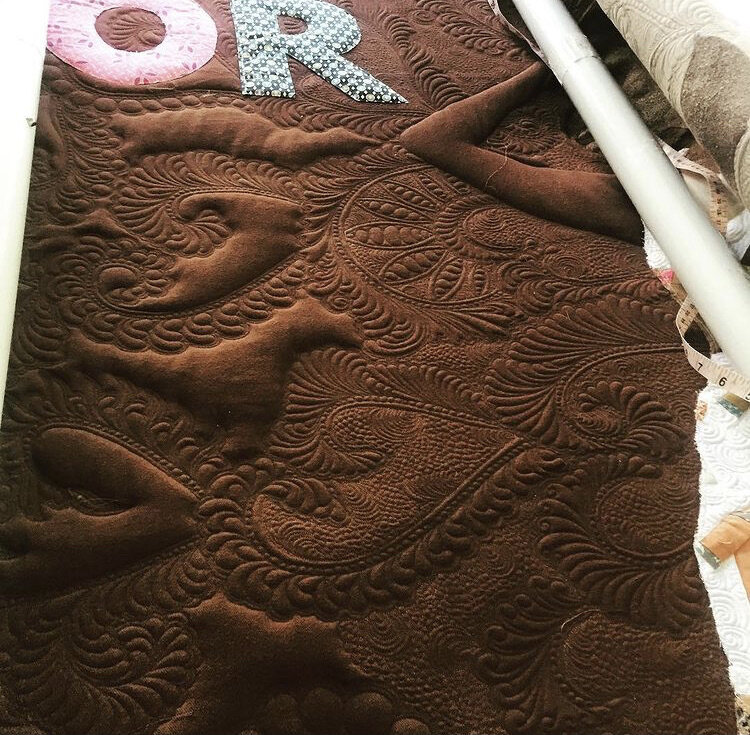Nude is Not a Color
In 2014, Bianca Springer, a sewist and blogger from Pearland, Texas, contacted a popular artisan clothing brand that she had supported in the past after it released a line of pale beige garments that it called “Nude.” Thinking perhaps they had done so thoughtlessly, Bianca explained that the color they had chosen to call “nude” represented only people with lighter skin tones and left out everyone who was not beige hued. She hoped the company would be receptive and work to fix something that was bound to make many of its customers and admirers feel excluded and invisible, but they dismissed her and declined to make a change.
Bianca discussed it with her friend, quiltmaker Hillary Goodwin, and with Bianca’s blessing, Hillary decided to take action to bring this slight, which many paler-skinned people had probably never even noticed, to the attention of the sewing community. She reached out to fellow quiltmakers on Instagram, and asked them to make blocks, using Carolyn Friedlander’s Shirts pattern and Denyse Schmidt’s Hope Valley fabric, with the color of the shirt representing the color of their skin or that of a loved one.
PMQG member Tamara King answered the call, and made two shirts, both in the peachy olive skin tone of her half-Italian son.
Tamara King’s shirts
The quilt took a few years to arrive at its final layout, and Hillary collaborated with long arm artist Rachael Dorr, who created a thread portrait of Bianca on the quilt, in addition to other spectacular quilting.
[Photos by Rachael Dorr]
Nude is Not a Color was recently acquired by The Henry Ford Museum of American Innovation and is part of an exhibit entitled What We Wore. You can read about the quilt’s story and see the contributors and read their statements here. The quilt is displayed so that both the front and back are in view. The Museum describes the quilt as “a statement in fabric designed as a response to racial bias in the garment industry.”
[photo by Kristin Barrus]
[photo by Hillary Goodwin]
Bianca Springer and Hillary Goodwin at QuiltCon 2020 (quilt by Marla Varner)
The contributors and their statements [photo by Lynn Carson Harris].





![[photo by Kristin Barrus]](https://images.squarespace-cdn.com/content/v1/568053cda12f44019ca48b63/1615960965643-J957M9XQQ144Q3CTNZYZ/IMG_2751.jpeg)
![[photo by Hillary Goodwin]](https://images.squarespace-cdn.com/content/v1/568053cda12f44019ca48b63/1615961111639-R91RUAK74U0AB4UFW84S/IMG_2752.jpeg)

![The contributors and their statements [photo by Lynn Carson Harris].](https://images.squarespace-cdn.com/content/v1/568053cda12f44019ca48b63/1615961163757-WM1M8A7KH4KOAHWRXBL6/IMG_2748.jpeg)